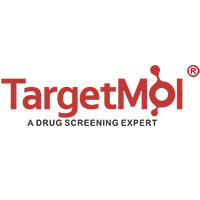| Name | Ziprasidone hydrochloride |
| Description | Ziprasidone hydrochloride (CP-88059 hydrochloride) is a united 5-HT (serotonin) and dopamine receptor antagonist which shows potent effects of antipsychotic activity. |
| In vitro | Ziprasidone exhibits an inherent protective mechanism against drug-induced increases in food intake, demonstrated by its ability to inhibit the significant enhancement of food consumption caused by olanzapine in rats. It also induces a notable upregulation of NGF and ChAT immunoreactivity in the hippocampal regions dentate gyrus, CA1, and CA3 of rats. Furthermore, Ziprasidone dose-dependently decreases the activity of midbrain central tegmental field neurons (ED50 = 300 mg/kg i.v.), similar to atypical antipsychotics like clozapine (ED50 = 250 mg/kg i.v.) and olanzapine (ED50 = 1000 mg/kg i.v.) in anesthetized rats. In Xenopus oocytes, Ziprasidone displays a lower inhibitory effect (IC50 = 2.8 mM) on the wild-type hERG current. |
| In vivo | Ziprasidone blocks wild-type hERG currents in a voltage and concentration-dependent manner with an IC(50) of 120 nM in stably transfected HEK-293 cells. Minimal hERG current blockade by ziprasidone is estimated during depolarized voltages (-20 or +30 mV) or assessed via envelope of tail test (+30 mV). The compound significantly prolongs the time constant of the slow component of hERG current deactivation at -50 mV. Ziprasidone acts as a 5-HT(1A) receptor agonist and antagonizes 5-HT(2A), 5-HT(2C), and 5-HT(1B/1D) receptors, similar to the antidepressant imipramine in inhibiting serotonin and norepinephrine neuronal uptake. It also exhibits high affinity for human 5-HT receptors and dopamine D(2) receptors. |
| Storage | Powder: -20°C for 3 years | In solvent: -80°C for 1 year | Shipping with blue ice. |
| Solubility Information | DMSO : 83 mg/mL (184.69 mM), Sonication is recommended.
H2O : < 1 mg/mL (insoluble or slightly soluble)
Ethanol : < 1 mg/mL (insoluble or slightly soluble)
|
| Keywords | α2A-adrenergic receptor | α1A-adrenergic receptor | Ziprasidone | uptake | Sprague-Dawley | rats | norepinephrine transporter (NET) | neuronal | HistamineReceptor | Histamine Receptor | H1 receptor | DopamineReceptor | Dopamine Receptor | Dopamine | D3 | D2 | D1 | CP88059 Hydrochloride | CP88059 | CP 88059 Hydrochloride | CP 88059 | antipsychotic | AdrenergicReceptor | Adrenergic Receptor | 5HTReceptor | 5-HT7 | 5-HT6 | 5-HT2C | 5-HT2A | 5-HT1D | 5-HT1B | 5-HT1A | 5-HT transporter | 5-HT Receptor | 5HT Receptor |
| Inhibitors Related | Alverine citrate | Meclizine dihydrochloride | Dapoxetine hydrochloride | Clozapine N-Oxide | Lidocaine | Famotidine | Octopamine hydrochloride | Sodium butanoate | D-Menthol | Oxolinic acid | Alginic acid | Trazodone hydrochloride |
| Related Compound Libraries | Bioactive Compound Library | Anti-Neurodegenerative Disease Compound Library | Pain-Related Compound Library | Membrane Protein-targeted Compound Library | Anti-Cancer Clinical Compound Library | Drug Repurposing Compound Library | Inhibitor Library | Anti-Cancer Approved Drug Library | FDA-Approved Drug Library | Immunology/Inflammation Compound Library | Bioactive Compounds Library Max | Anti-Cancer Drug Library |

 United States
United States





